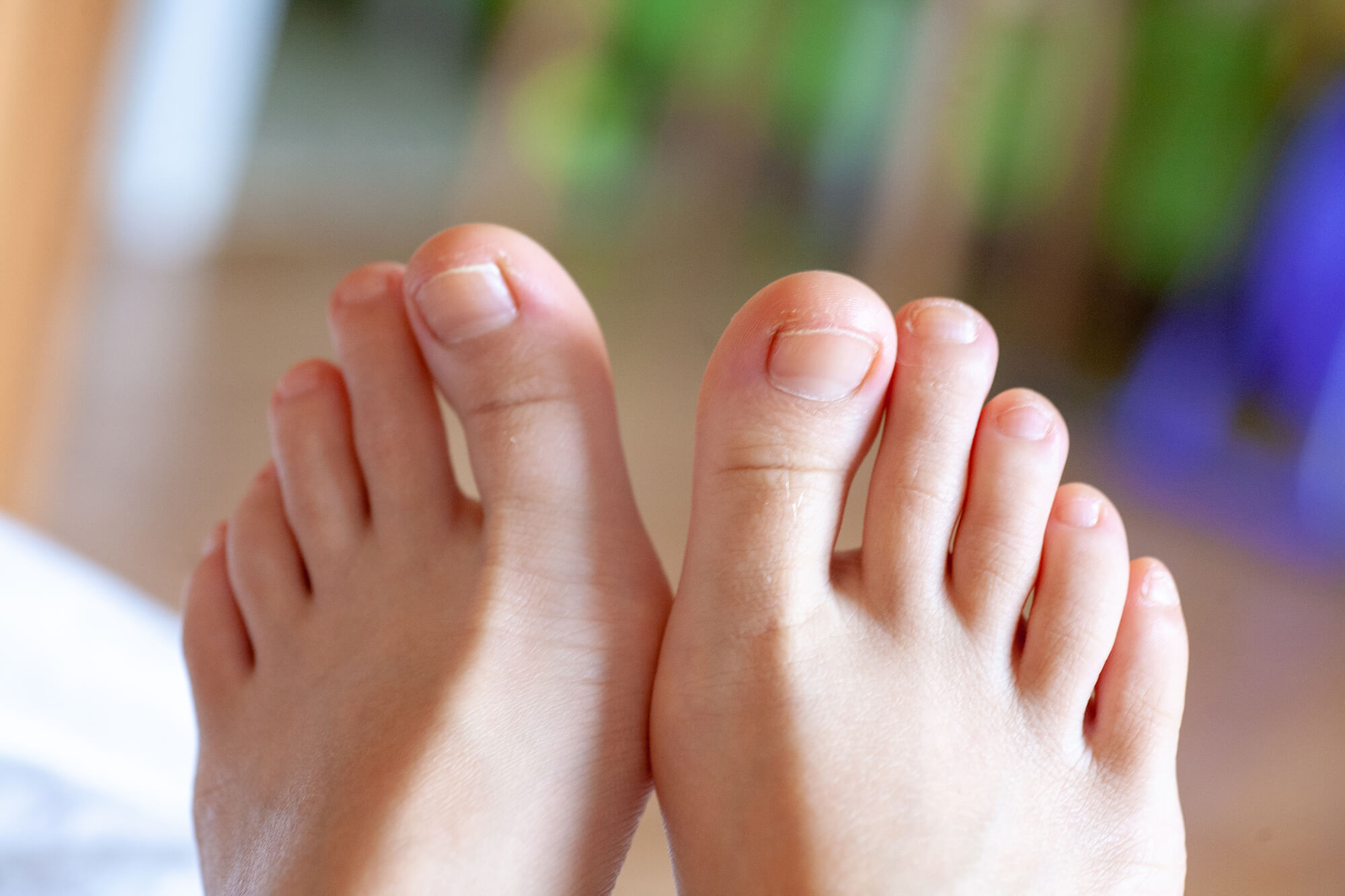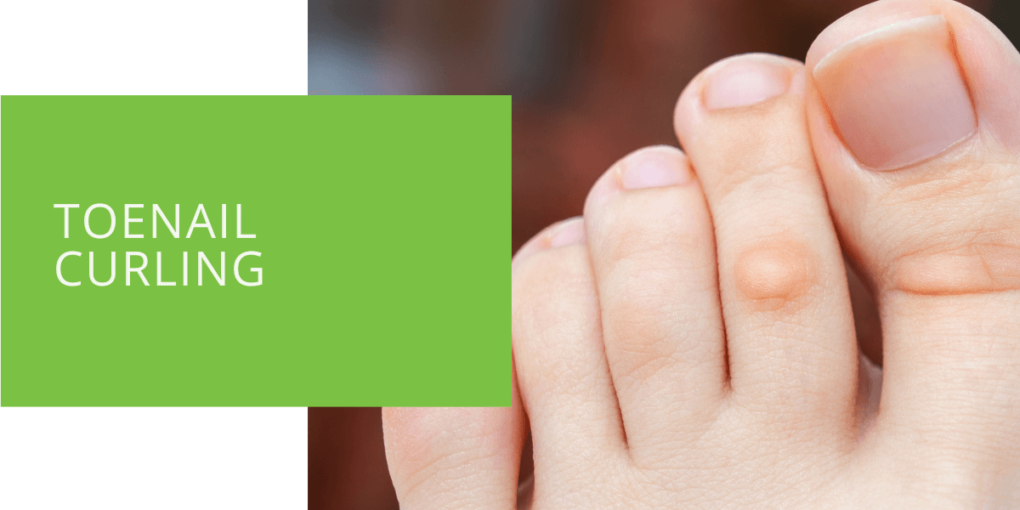Understanding Toenail Curling: Causes and Solutions
Our feet are an essential part of our body and need proper care to keep us moving comfortably. However, we often overlook the importance of our toenails and their role in protecting our toes. Toenails may seem insignificant, but they are critical components that shield our toes' sensitive nail beds and tips. When toenail problems arise, it can cause severe discomfort and pain, making walking or performing daily activities difficult.
One of the most common toenail problems that people face is toenail curling. Toenail curling can occur for various reasons, such as trauma, improper footwear, or underlying medical conditions. The condition can cause the toenails to become thick, brittle, and curved, leading to discomfort and pain. Toenail curling can lead to infections and other foot problems if left untreated. This comprehensive guide will delve into the intricacies of toenail curling, its causes, symptoms, and effective solutions to help you maintain optimal foot health. So, whether you are dealing with toenail curling or want to prevent it from happening, you have come to the right place.
Key Takeaways
- Toenail curling, also known as pincer nails or curved toenails, can lead to discomfort and pain, but it is different from ingrown toenails.
- Causes of toenail curling include genetics, improper nail trimming, tight footwear, and fungal infections, which can result in various symptoms and complications.
- Treatment options range from non-invasive techniques like proper nail care and appropriate footwear to invasive procedures like partial toenail removal, with prevention being a crucial aspect of toenail health. Consulting a podiatrist is essential for accurate diagnosis and effective management.
Toenail Anatomy
Before we explore the nuances of toenail curling, it's crucial to have a foundational understanding of toenail anatomy. Toenails, primarily composed of a tough protein called keratin, grow from a nail matrix beneath the cuticle. These nails serve as protective shields, safeguarding the sensitive nail bed and the tips of our toes.
The toenail's structure is more than skin-deep. It comprises various layers, with the outer layer being the hardest and most protective. Understanding this structure is vital in comprehending the causes of toenail problems like curling.
What Is Toenail Curling?
Toenail curling, often called pincer nails or curved toenails, is characterized by the edges of the toenail curving downward and potentially digging into the surrounding skin. This can lead to discomfort, pain, and, if left unattended, even infection. It's essential to clarify that while toenail curling shares some similarities with ingrown toenails, they are distinct conditions.
Toenail curling is not to be confused with ingrown toenails, although they may involve discomfort and nail-related issues. Understanding this distinction is essential for accurate diagnosis and treatment.
Causes of Toenail Curling
To fully comprehend toenail curling, it's crucial to identify the root causes behind its development. Several factors can contribute to the occurrence of curled toenails:
Genetics
Genetics can play a significant role in toenail curling. Some individuals may be genetically predisposed to have toenails that naturally curve more than others. You might be at a higher risk if there's a family history of curled toenails.
Improper Nail Trimming
One common cause of toenail curling is improper nail trimming. Cutting your toenails too short or rounding the edges can encourage them to grow into the surrounding skin.
Footwear
Your choice of footwear can also impact the health of your toenails. Shoes that are too tight or narrow can exert pressure on the toes and toenails, potentially causing them to curl over time.
Fungal Infections
Fungal infections, such as onychomycosis, can change the texture and thickness of the toenail. This alteration may contribute to toenail curling.
Understanding the underlying causes of toenail curling is essential for targeted prevention and treatment strategies. Genetics, nail care, footwear, and fungal infections are all factors that need to be considered.

Symptoms and Complications
Recognizing the symptoms of toenail curling is crucial for early intervention. Some common signs include:
- Pain or discomfort along the edges of the toenail.
- Redness, swelling, and tenderness in the affected area.
- Formation of an ingrown toenail, where the nail penetrates the skin.
- Thickening of the toenail.
If left untreated, toenail curling can lead to complications such as infection, abscess formation, and even permanent damage to the nail bed.
Understanding the symptoms and potential complications associated with toenail curling can help individuals identify the issue early and seek appropriate treatment before it worsens.
Diagnosis and Assessment
When you suspect toenail curling, it's crucial to consult a podiatrist. They possess the expertise to conduct a thorough examination and diagnose accurately. This assessment typically includes:
- Evaluation of the toenail's shape, thickness, and any signs of infection.
- A review of your medical history to identify any contributing factors.
A podiatrist's specialized knowledge and diagnostic skills are vital in pinpointing the exact nature and extent of the toenail curling problem.
Treatment Options
Addressing toenail curling promptly is essential to prevent further discomfort and complications. Treatment options vary depending on the severity of the condition:
Non-Invasive Methods
Proper Nail Care Techniques
One of the primary non-invasive methods for managing toenail curling is learning the correct way to trim your toenails. This practice involves trimming them straight across and avoiding sharp edges.
Footwear Recommendations
Choosing footwear that fits properly and doesn't squeeze the toes can alleviate pressure on the toenails.
Managing Fungal Infections
Your podiatrist may prescribe antifungal treatments to address the underlying issue if a fungal infection contributes to the toenail curling.
Invasive Procedures
Partial Toenail Removal (Matrixectomy)
In severe cases where conservative measures aren't effective, a podiatrist may recommend partial toenail removal. This procedure involves removing a portion of the nail and the nail matrix to prevent regrowth.
Surgical Correction
Surgical correction procedures can be considered for persistent toenail curling. These interventions aim to reshape the toenail and prevent future curling.
Understanding the various treatment options available, both non-invasive and invasive empowers individuals to make informed decisions about their toenail health.
Preventing Toenail Curling
Prevention is always preferable to treatment when it comes to toenail curling. Here are some practical tips to help you avoid this condition:
- Trim your toenails straight across to prevent sharp edges.
- Avoid wearing shoes that are too tight or narrow.
- Keep your feet clean and dry to reduce the risk of fungal infections.
Proactive measures can significantly reduce the likelihood of developing toenail curling, making prevention an essential aspect of toenail care.
When to Consult a Podiatrist
If you experience persistent toenail curling, pain, or signs of infection, it's essential to seek professional help from a podiatrist. They can provide expert guidance and personalized treatment options tailored to your needs.
Knowing when to consult a podiatrist is crucial for timely intervention and preventing complications. Podiatrists are specialists in diagnosing and treating toenail problems.
Conclusion
Toenail curling, though seemingly innocuous, can cause significant discomfort and even lead to more severe issues if left untreated. At ePodiatrists, we specialize in addressing toenail concerns and providing expert advice on maintaining healthy feet. Our experienced team of podiatrists is here to help you with any foot-related issues you may have. Don't let toenail curling disrupt your comfort – schedule an appointment with us today to take the first step towards healthier feet.

